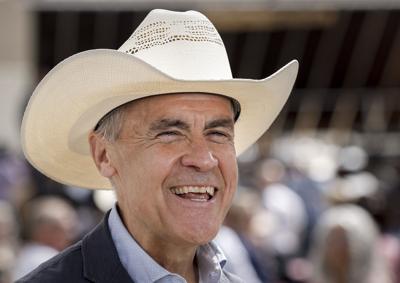OTTAWA — Public sector union leaders met with government officials on Tuesday as they raised concerns that the Liberal administration’s new plan to reduce internal spending is moving too fast and could lead to job cuts and worse federal services.Â
The meeting was held a day after media reports that Finance Minister Francois-Philippe Champagne and Treasury Board President Shafqat Ali asked all cabinet ministers to come up with ways to cut spending in their respective portfolios. It’s not yet clear where the reductions will come from, but the Star confirmed Monday that the government wants departments to drop their annual spending by 15 per cent over the next three years from a pool of funding worth more than $143 billion.Â
That would mean more than $21.5 billion in internal savings by the 2028-29 fiscal year — a significantly higher target than the $13 billion that Prime Minister Mark Carney’s Liberals promised by that time during the campaign for the April 28 general election.Â
Since then, however, Carney has announced a surge in defence spending, with an extra $9 billion this year, and plans to crank up military budgets by tens of billions more to meet new commitments inked in June through the North Atlantic Treaty Organization (NATO).Â
In a written statement, the president of the Public Service Alliance of Canada, which represents about 240,000 workers, said Carney’s proposed “deep spending cuts” will harm programs Canadians rely on. Sharon DeSousa also warned they could result in “thousands of public service job cuts” across the country.Â
“Canada’s public service workers power this country, and we need a government that supports a strong, stable public service to take on the challenges ahead,” DeSousa’s statement said.Â
Sean O’Reilly, president of the Professional Institute of the Public Service of Canada, which represents 80,000 workers, also attended Tuesday’s meeting with government officials. He said they provided roughly the same information that was already public, and that he left feeling worried about how fast the government is moving, with a request to cabinet ministers to identify areas for spending reduction by the end of August.Â
“They’re basically giving them the next six, seven weeks to come up with ideas,” O’Reilly told the Star. “That is not proper, and I’m worried that we’re going to see cuts that are going to affect Canadians very directly,”
He added that his union — which represents Canada Revenue Agency workers, scientists and meteorologists, among others — supports finding ways the government can operate more efficiently, but said he is worried the exercise could lead to “cuts just for cuts.”Â
Spokespeople for Champagne and Ali declined to comment about the union concerns on Tuesday.Â
Carney has said repeatedly that his plan is to reduce how much the government spends on internal operations, while using federal dollars for to “invest more” in areas that grow the economy. He has also said his Liberal government won’t cut federal transfer payments to individuals and other levels of government, and that it would preserve social programs like national child care, dental care, and public coverage for birth control and diabetes medication.Â
Regarding the public service, Carney has said operational spending has grown too fast over the past decade, and that he would cap the number of civil servants in the federal government.Â
The letter detailing the spending review called on cabinet ministers to find “ambitious savings” to “spend less on the day-to-day running of government,” according to an excerpt that a senior government source provided to the Star. The letter also asked them to review programs in their portfolios and determine whether they working as intended or duplicate what other levels of government are doing.Â
The plan significantly exceeds a previous spending review planned under Carney’s predecessor, Justin Trudeau, when the government sought $15.4 billion in internal savings over five years.Â
Economists like David Macdonald at the Canadian Centre for Policy Alternatives have said the scale of the Liberal government’s planned spending reductions appear larger than those seen 30 years ago under then-prime minister Jean Chrétien. As Macdonald explained Monday, in comments that echoed a study he published June 30, that assumes the government excludes the Department of National Defence from reductions, as it prepares to see military spending jump in further in the coming years.Â
Last week, the C.D. Howe Institute published a that projected the federal budget deficit will jump to $92.2 billion this year, up from around $62 billion predicted in the Liberal election platform, and dropping to around $71 billion in three years. The increase is largely credited to increased defence spending and other policy moves, such as the cancellation of the digital services tax under pressure from the United States.Â
Angella MacEwen, senior economist at the Canadian Union of Public Employees (CUPE), said she shares concerns about how fast the government is moving on its new spending review. She said reductions on the scale the government has signalled also raise questions about whether any federal responsibilities will be “downloaded” to provinces and municipalities. CUPE represents workers at both those levels of government, where further budgetary constraints could add to concerns that public infrastructure or services could get privatized to ease pressure on balance sheets, MacEwen said.Â
“If I were a province or a municipality right now, I’d be very concerned,” she said.Â
Error! Sorry, there was an error processing your request.
There was a problem with the recaptcha. Please try again.
You may unsubscribe at any time. By signing up, you agree to our and . This site is protected by reCAPTCHA and the Google and apply.
Want more of the latest from us? Sign up for more at our newsletter page.



























To join the conversation set a first and last name in your user profile.
Sign in or register for free to join the Conversation